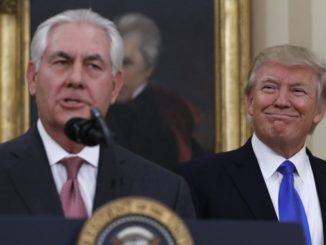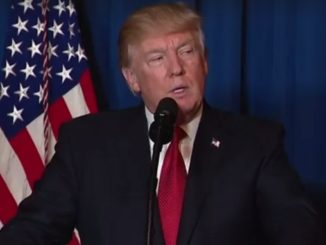
Early last year, President Donald Trump riffed on an idea he called “Space Force” before a crowd of Marines in San Diego. It drew laughs, but the moment was a breakthrough for a plan that had languished for nearly 20 years, NPR writes.
“I said maybe we need a new force, we’ll call it the Space Force,” Trump said at Marine Corps Air Station Miramar in March 2018. “And I was not really serious. Then I said, ‘What a great idea, maybe we’ll have to do that’.”
But now, under a new name and with Congress’ support, Space Force is closer to becoming a new military reality, and it would be the first new military service in more than 70 years, NPR adds.
In January 2001, a special commission chaired by former Defense Secretary Donald Rumsfeld said space needed to become a top national security priority. But the 9/11 terrorist attacks derailed those plans.
Since that time, military leaders, lawmakers and experts have warned that new resources were needed in space to get ahead of a potential, hostile nation setting out to destroy a U.S. satellite. Such a move could threaten our everyday lives, from our cell phones to the electric grid to the military’s ability to launch nuclear weapons.
As a result, proponents argue that the U.S. has fallen behind and needs to upgrade an existing Air Force office focused on space to become an official service, NPR informs.
“One of the main concerns is being able to develop a military space cadre who understands the space domain and understands threats to U.S. military space systems and some of those threats are developing already,” said Kaitlyn Johnson, a senior fellow at the Center for Strategic and International Studies. “Some of these are big and flashy anti-satellite weapons … Some of them are like missiles that are on the ground that shoot up into the air, target a satellite and physically hit and detonate and kill that satellite.”
So far, Russia and China are among the countries that have demonstrated the ability to destroy satellites. And in March, India joined the group when it destroyed one of its own satellites.
Such tests also add to space debris, triggering concerns of fast-moving particles that could now cause damage to a functioning satellite or worse. Much of the threats in space are classified, but those in the know such as Defense Secretary Mark Esper are publicly worried.
“I think what we are trying to do is recognize that space is no longer a place in which we support combat operations or from which we look down upon the world and see what’s happening,” Esper said during his July confirmation hearing. “It is now a warfighting domain. Not because we made it that way but because the Russians and Chinese are making it that way.”
Now, key lawmakers leading the charge have the support they need to make a new U.S. space service a reality. The House and the Senate have both proposed plans for Space Force in their versions of the annual defense bill.
And next month, a congressional conference committee could hammer out a final blueprint in its approval of the fiscal year 2020 National Defense Authorization Act.
“I’m excited that it looks like we’ll be able to have, really, the birth of a new service for the first time in 70 years,” said Democratic Tennessee Rep. Jim Cooper, a key architect of the plan. “Each warfighting domain should have its own capabilities.”




Be the first to comment